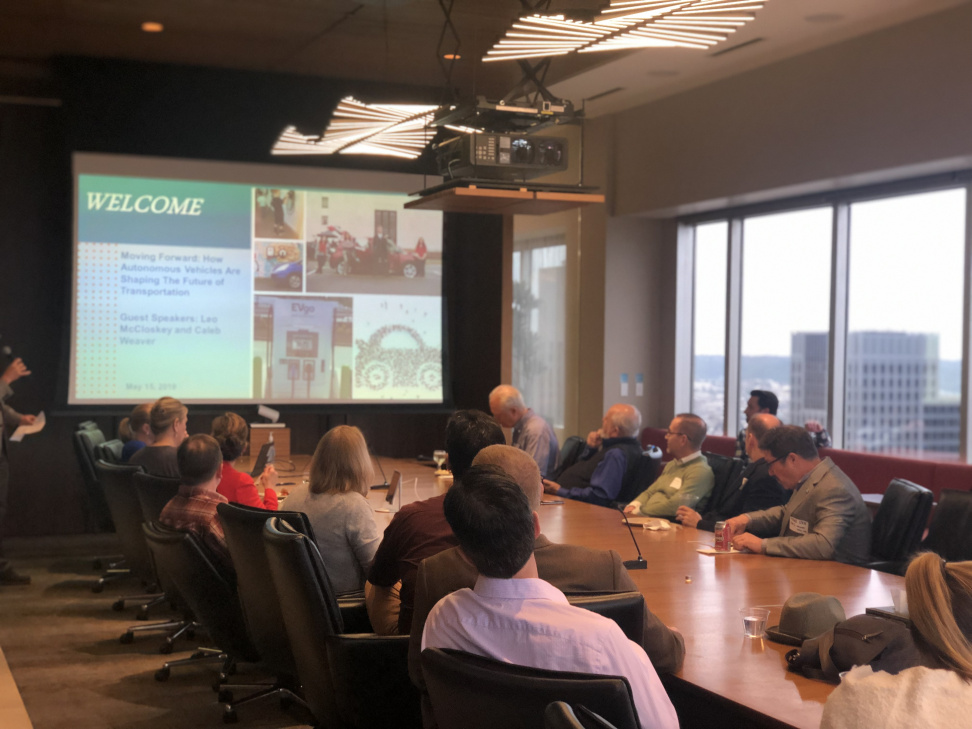
Moving Forward: How Autonomous Vehicles Are Shaping the Future of Transportation
By: Forth
At our May networking event, we partnered with ACES Northwest Networks in Seattle to explore current autonomous technology and the future of smart transportation. Our guest speakers Leo McCloskey, Vice President of Marketing at Echodyne, and Caleb Weaver, Public Affairs (US West) at Uber, discussed their respective visions for utilizing autonomous vehicles to create a safer smart transportation system.
Echodyne is working toward autonomous connected electric shared vehicles (ACES), by producing compact, solid-state beam-steering radar sensors.
McCloskey cited biological analysis as one of the current challenges with AVs. Autonomous vehicles will need to act and react like humans in order to be integrated into the real-life driver environment. There is no such thing as too much data, the ultimate ACES technology will have hearing, vision, memory, and power in order to compete with modern drivers. ACES vehicles will need to adapt to current road conditions by constantly collecting data while simultaneously processing it to react to the ever-changing landscape.
McCloskey stated that Echodyne believes in a transportation network system defined by the efficient handling of origin-destination paired with modal and temporal awareness. And in order to achieve the goal of autonomous transportation, humans will need to give up driving entirely!
You can view Leo’s presentation here
Caleb Weaver says Uber’s Advanced Technology Group is on a mission to bring safe and reliable self-driving transportation to everyone, everywhere and believes that if successful, autonomous vehicles have the potential to make roads safer and transportation more affordable.
Weaver mentioned that Uber isn’t an auto manufacturer but a mobility company. They are working with auto manufacturers to share lessons learned from their trials and providing Uber’s software to manufacturers to test it in real-world challenges.
Uber ATG has created a set of core software platforms, enabling activities ranging from data processing, to advanced machine learning, to custom, onboard computing infrastructure, to multi-dimensional data visualization. Uber ATG is staffed by over 1000 employees in five offices working on safety, user experience, systems engineering and testing, as well as software and hardware engineering.
The future of mobility can be shared, sustainable, and automated. Autonomous vehicles can be safer, cost-efficient, space-efficient, equitable and sustainable.
The road to ACES vehicles is not an idyllic one but with companies like Uber and Echodyne working to improve the autonomous technology, the future looks bright.


